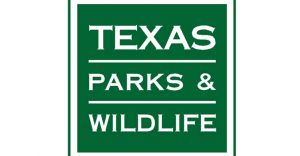
Ryan Harrington with the RE/MAX ONE Commercial Division just wrapped up the sale of 10.5 Acres on Hwy 73 in Port Arthur. The Sellers acquired the property through probate and had been paying taxes on the property for years. They finally decided to sell off the parcel and Ryan was happy to help. Over half of the property was unusable with state and drainage easements which made marketing a challenge. RE/MAX helped them price the property appropriately based on the usable acreage and was able to find the right buyer next door. The property was purchased to become a part of the adjoining J.D. Murphree Wildlife Management Area which is managed by Texas Parks and Wildlife.
More about the J.D. Murphree Wildlife Management Area:
The J. D. Murphree Wildlife Management Area is a 24,250 acre tract of fresh, intermediate and brackish water within the prairie-marsh zone along the upper coast of Texas. These wetlands are part of the Texas Chenier Plain, the westernmost geologic delta of the Mississippi River. The headquarters is on the south side of Highway 73 at the intersection of Jade Avenue in Port Arthur. Three distinct units exist: the Big Hill Unit (8,312 acres), the Hillebrandt Unit (591 acres), and the Lost Lake Unit (4,074 acres). Besides the migratory and nesting waterfowl that feed in the Area, a large list of mammals live and forage there as well. The list includes mammals such as the muskrat, nutria, swamp rabbit, eastern cottontail, raccoon, river otter, coyote, mink, opossum, armadillo, striped skunk, rice rat, white-footed mouse, bobcat, and cotton rat. Freshwater and saltwater fish common to the Texas coast are found in the Area. The American alligator is the single most important reptile and predator on the Area with a dense population estimated at better than one alligator per acre. Hours: Open during daylight hours for wildlife viewing except during hunting season. Freshwater and coastal fishing compartments and ditches are open March 1 - August 31. Fishing is permitted 30 minutes before sunrise to 30 minutes after sunset. Permits: An Annual Public Hunting Permit (APH) is required to fish within the WMA unless all activity is confined to a boat within navigable waters. Hunters must possess a valid hunting license, the appropriate tags and stamps, as well as the proper public hunting permit.
More about Texas Parks and Wildlife:
The mission of Texas Parks and Wildlife Department (TPWD) is to manage and conserve the natural and cultural resources of Texas and to provide hunting, fishing and outdoor recreation opportunities for the use and enjoyment of present and future generations.
Since our inception in 1895 as the Fish & Oyster Commission, with Texas Game Wardens providing "Law Enforcement off the Pavement," and with the addition of the Game Department in 1907, we became the Texas Game & Fish Commission. When we merged with the State Parks Board in 1963, we became Texas Parks & Wildlife Department.


